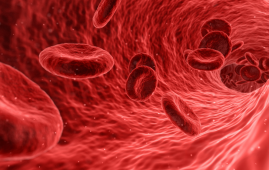

When women develop uncomfortable uterine fibroids, the standard treatment is hormone therapy, but experts note that they are focusing on other treatment options.
A research from the University of Cincinnati discovered that fibroid cells react differently to physical tension than uterine cells around them. This is significant, according to researcher Stacey Schutte, because treatment seeks to target the tumor without damaging surrounding tissue.
Fibroids are quite common: Noncancerous uterine tumors affect about 8 out of 10 women at some point in their lives. While they are usually not life-threatening, they can cause severe bleeding and agony.
According to a university news release, treating fibroids is frequently invasive, costly, and can result in infertility.
“In her lifetime, one in every nine women will have a hysterectomy.” “And one-third to one-half of those are [as a result of] uterine fibroids,” said Schutte, an assistant professor of biomedical engineering and co-author of the study published recently in the journal F&S Science.
The researchers are exploring for non-hormonal fibroid treatments, according to study co-author Andreja Moset Zupan, a research associate in Schutte’s lab.
“It’s another option we could use to preserve the fertility of women who still want to get pregnant,” she said in a university press statement.
During a woman’s menstrual cycle, her body produces estrogen and progesterone. These hormones cause the uterine lining to thicken in preparation for a prospective pregnancy, but they can also promote fibroid growth.
Schutte observed that cells can react to physical strain, which is what her team set out to research.
Fibroid and uterine cells were cultured in the lab on plates with an elastic bottom for their investigation. The cells were then pulled and stretched by a vacuum, simulating the uterine environment. They noticed changes in how cells kept their form.
“We found that fibroid cells were more sensitive to strain,” stated lead author Dr. Rachel Warwar of the University of Cincinnati’s College of Medicine. She believes the findings highlight the need of include mechanical strain, rather than only hormones, in the research of fibroid cells.
“The more we are able to mimic the environment of these cells in the uterus, the more we will understand the pathology of these cells and then can work to target anomalous pathways in fibroid cells,” Warwar went on to say.
Once the pathology is understood, researchers can utilize 3D simulations and models to learn more about how tumors arise and the best approaches to treat them. The next stage will be to create more complicated tumor models.
“It makes me really happy to think we can find a target,” she remarked.
Fibroids are a big health-care expense, according to researchers, costing up to $9 billion every year in the United States alone.
more recommended stories
 Fat-Regulating Enzyme Offers New Target for Obesity
Fat-Regulating Enzyme Offers New Target for ObesityKey Highlights (Quick Summary) Researchers identified.
 Spatial Computing Explains How Brain Organizes Cognition
Spatial Computing Explains How Brain Organizes CognitionKey Takeaways (Quick Summary) MIT researchers.
 Gestational Diabetes Risk Identified by Blood Metabolites
Gestational Diabetes Risk Identified by Blood MetabolitesKey Takeaways (Quick Summary for Clinicians).
 Phage Therapy Study Reveals RNA-Based Infection Control
Phage Therapy Study Reveals RNA-Based Infection ControlKey Takeaways (Quick Summary) Researchers uncovered.
 Pelvic Floor Disorders: Treatable Yet Often Ignored
Pelvic Floor Disorders: Treatable Yet Often IgnoredKey Takeaways (Quick Summary) Pelvic floor.
 Urine-Based microRNA Aging Clock Predicts Biological Age
Urine-Based microRNA Aging Clock Predicts Biological AgeKey Takeaways (Quick Summary) Researchers developed.
 Circadian Control of Neutrophils in Myocardial Infarction
Circadian Control of Neutrophils in Myocardial InfarctionKey Takeaways for HCPs Neutrophil activity.
 E-Cigarette Use and Heart Attack Risk in Former Smokers
E-Cigarette Use and Heart Attack Risk in Former SmokersKey Takeaways for Clinicians and Nurses.
 36-Week Pre-eclampsia Screening May Reduce Term Risk
36-Week Pre-eclampsia Screening May Reduce Term RiskA New Preventive Strategy for Term.
 Cardiovascular Risk and Sudden Cardiac Death in Diabetes
Cardiovascular Risk and Sudden Cardiac Death in DiabetesRising Sudden Cardiac Death (SCD) Risk.

Leave a Comment